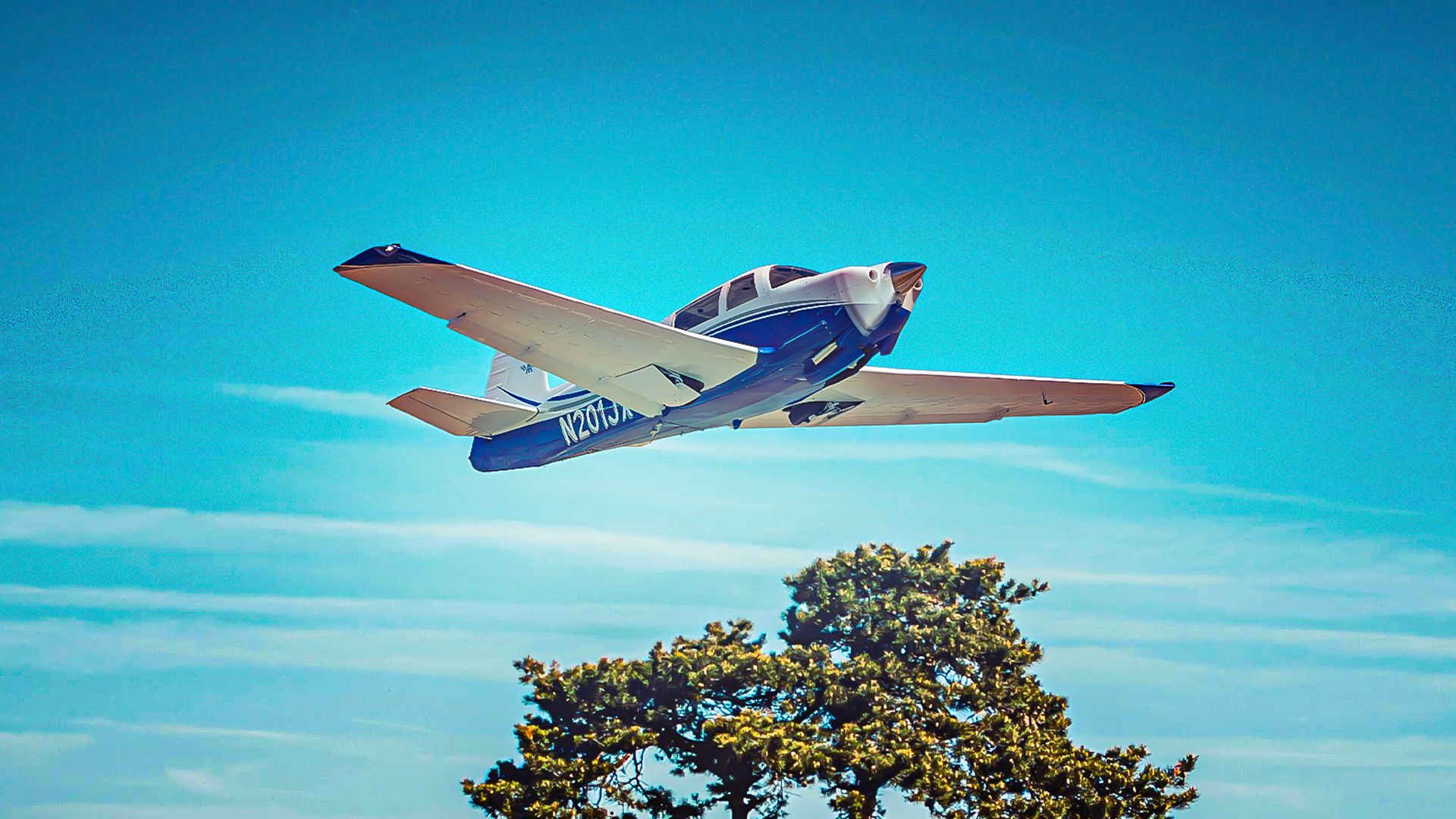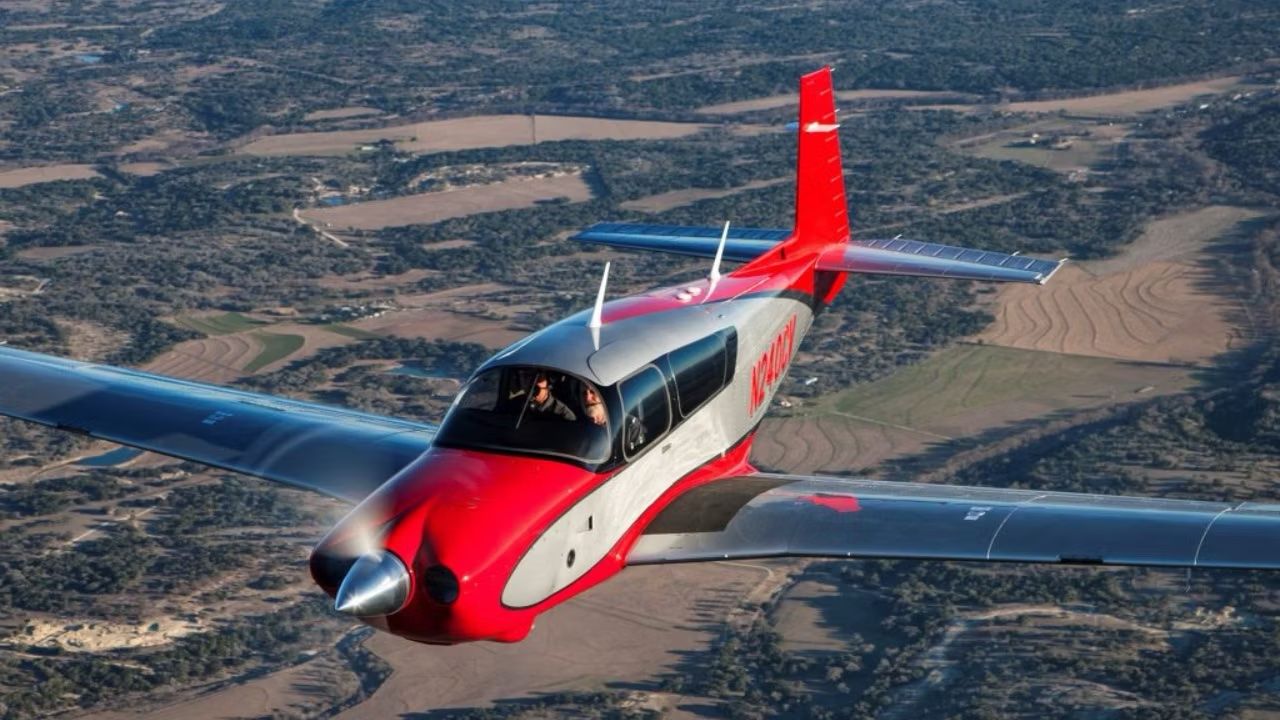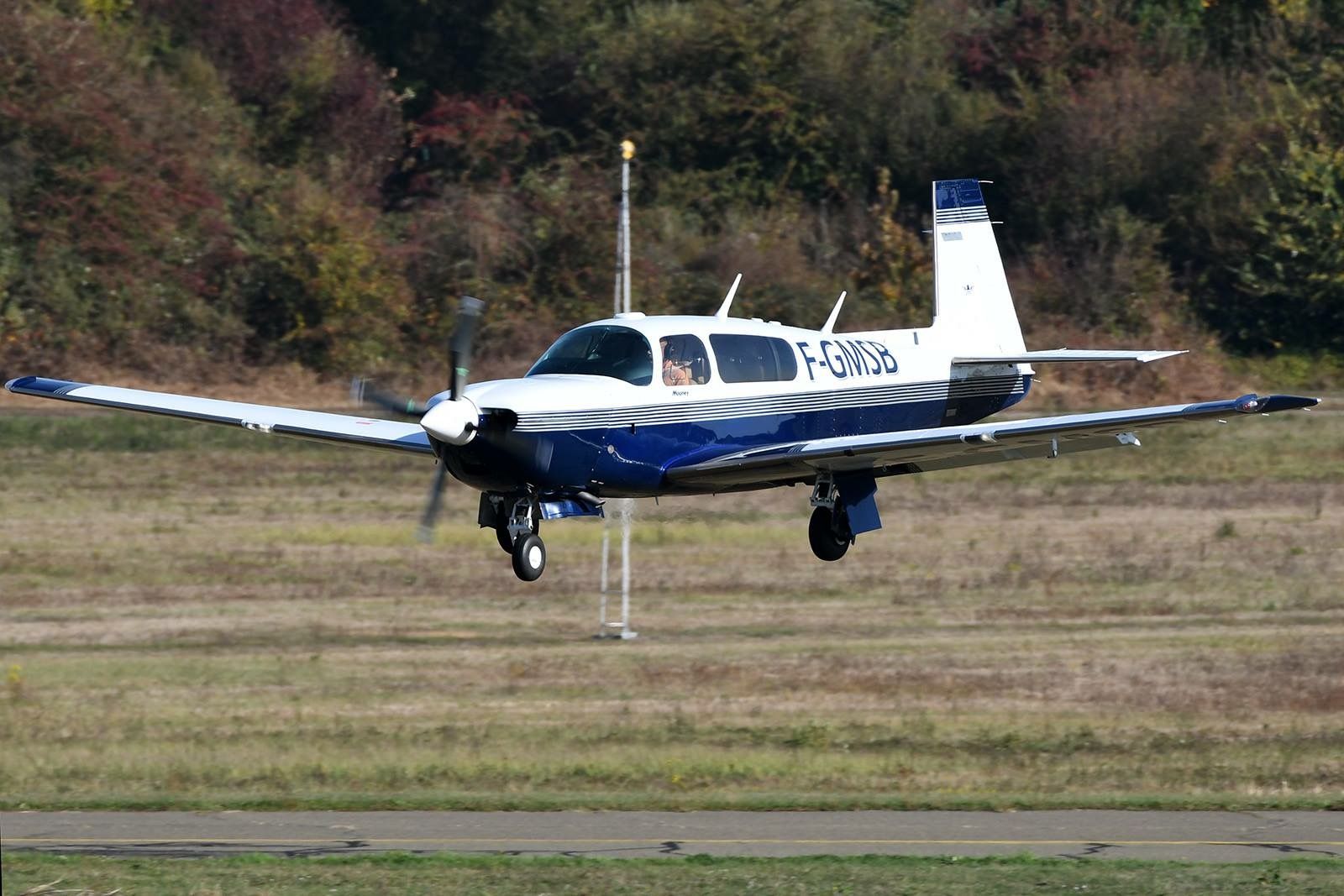Summary
- The Mooney M20’s success in the aviation industry is thanks to continuous redesign and production for almost 60 years.
- First introduced in the 1950s, the M20 features wooden and metal structures in subsequent models for lightness and reliability.
- Models like the M20B, M20E, and M20J offer various upgrades, with different body lengths affecting passenger space and performance.
At first sight, the
Mooney M20
family of aircraft does not catch the eye as something special that would immediately set it apart from other general aviation planes. The single-engine, four-seat utility aircraft is powered by a piston engine and features similar low-set wings and tricycle landing gear that can easily be found on all sorts of other personal planes.
The original engineer behind the M20 was none other than 1920s-era aviation pioneer Al Mooney, for whom the M20 demonstrated the 20th design to be brought forward for commercial consideration. The company that Mooney and members of his family started, the Mooney International Corporation, would eventually push forward with the M20 design over nearly 60 years, through which the M20 has been repeatedly redesigned and improved.
Photo: Mooney
Throughout multiple production runs, the M20 has solidified its position as one of the most successful single-engine personal utility aircraft of all time, with over 11,000 of the type having rolled off of Mooney assembly lines in 2019. With such a cherished history, it is unsurprising that despite production ending before the COVID-19 pandemic, thousands of M20 family planes remain in the skies today. Let’s take a deeper look at some of the decisions that have led to the M20’s long-term success.
Origin, development, and adaptation over time
Mooney, who founded his namesake company in Wichita, Kansas, first focused on the development of the single-seat M-18 Mite before shifting towards the larger M20 by the time the 1950s rolled around. The first M20 took to the skies by 1953, and would later receive full FAA certification by 1955.
The aircraft quickly became an owner’s favorite, due to its impressive combination of speed and efficiency. One of the primary assets of the original M20 was its fully wooden structure, which lacked the risks of metal fatigue. As a result, the aircraft was both light and required relatively little maintenance.
According to a published interview with Bill Wheat, an employee of Mooney International for over 40 decades, the wooden frame was a novel concept that proved itself over time. Wheat noted that pilots appreciated the original wooden frame for its versatility and ability to handle turbulence better than fully metal frames.
In the 1960s, Mooney began to introduce adapted models, such as the M20B, which featured an all-metal structure. These modifications offered a range of upgrades and fuel capacities to best meet the needs of any potential buyer. Other early M20 models included:
- The M20C, with enhanced features
- The M20D, which was a trainer
- The M20E Super 21
- The M20F Executive 21
- The M20J 201
- The M20K 231, which featured a turbocharged engine.
Despite financial difficulties and a lack of demand, the manufacturer continued to develop newer models, even throughout the 1980s, which saw a notable decline in general aviation traffic. During this period, Mooney still launched the M20K 252, the M20L PFM, the M20M TLS, the M20R Ovation and the M20K Encore, all of which offered improvements in flight performance and passenger comfort.
By the 2000s, Mooney had halted production amid heavy financial difficulties. However, new investment from Chinese markets led to the resumption of production in 2014, with new models like the M20U Ovation Ultra and the M20V Acclaim Ultra hitting the market in 2016, according to AVweb. Eventually, production was brought to a halt in 2019.
Design and specifications
The Mooney M20 is immediately recognizable by its low-wing design. While earlier models, as previously mentioned, had wooden components, modern M20s are constructed primarily from metals, with an aluminum skin anchored by flush-mounted rivets. The aircraft’s cabin structure features a steel-tube design covered in aluminum, with slotted flaps covering over 70% of the wings’ trailing edges.
The earliest models featured a hydraulic hand pump for operational control, but this was later improved to an electric flap system. Like many general aviation aircraft, the plane features a tricycle landing gear setup, with main gear attached to the wings. Rubber shock discs were placed alongside the landing gear to provide an impressive level of shock absorption. For the most part, the M20’s gear is retractable, even though some initial models required this gear to be manually raised and lowered by a hand lever.
The M20 offers a medium-range aspect ratio, with later improvements made to improve maneuverability and avoid stalls. Some additional specifications for the M20 can be seen in the table below:
|
Category |
M20 Specification |
|---|---|
|
Range |
1,100 nautical miles |
|
Maximum Speed |
278 miles per hour |
|
Maximum Takeoff Weight (MTOW) |
3,368 lbs |
|
Service Ceiling |
25,000 feet |
The aircraft’s fuel delivery system relies on two tanks mounted on the wings, and fuel is transferred to the engines by a dedicated pump. Additional power can also be leveraged from a ram-air induction system known as a “Power Boost,” which is offered by many M20 variants. According to the Mooney website, the latest variants are powered by Continental TSIO-550-G air-cooled 6-cylinder piston engines.
Turbocharged models are used for additional power increases, and many such examples remain on the market today. The aircraft is also offered in three different fuselage lengths, including short-body, medium-body and long-body variants. The primary distinction between the models is that longer ones will offer additional passenger legroom at the cost of a reduction in performance.
The time-tested design of the M20 has been one of many factors contributing to its long-term success. Thousands still remain registered with general aviation governing bodies like the US’s
Federal Aviation Administration
and the UK’s Civil Aviation Authority.



